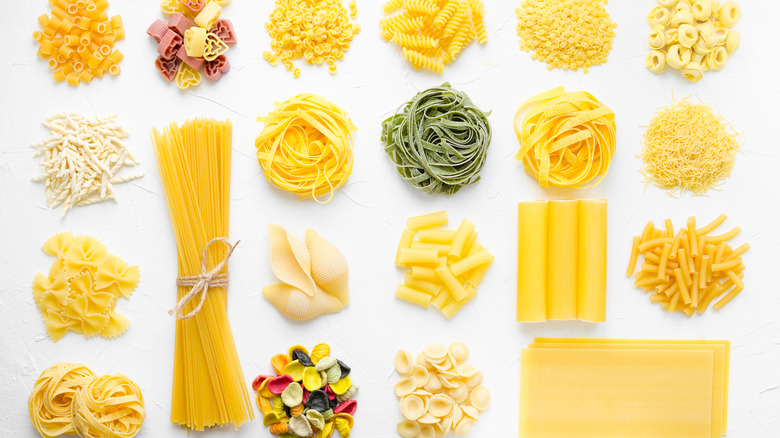The One Dried Pasta Rule Giada De Laurentiis Lives By
Think about it: In all its iterations, pasta can feasibly be consumed each day of the week without repeating a meal. It can also accommodate every dietary plan. Plus, did we mention how comforting and delicious it is? If there's a heaven, let there be pasta.
Like the rest of us, Giada De Laurentiis spends most nights cooking in her home kitchen, where she uses the time to iron out her recipes for home cooks. While her pasta dishes on Instagram are often prettier than the typical "ugly delicious" home-cooked meal, the celebrity chef focuses on using quality ingredients, not quantity. She keeps her pantry well stocked with ingredients that taste great and makes her body feel good by adding fresh produce and meat to round out her meals.
When it comes to dried pasta, De Laurentiis only uses brands manufactured in Italy, where there are strict laws governing pasta production. "American wheat tends to be the worst of the bunch because it's highly processed and modified and will make me feel bloated at night," said De Laurentiis (per CNN). De Laurentiis' website, Giadzy, carries over 200 imported pantry items the chef handpicked herself, including Italian dried pasta brands Setaro, Zaccagni (an organic brand), and gluten-free Massimo Zero.
Italians have strict standards for pasta
Italians take food very seriously and protect the dishes the country values most with laws. Neapolitan pizza is protected under strict guidelines surrounding which ingredients can be used and how pizza is to be cooked, as is pasta. Due to the 1967 "Law for Pureness," commercially sold Italian pasta must contain at least 10.5% protein and must be made with durum wheat semolina (or wholemeal semolina) and water. That's it. No additives are allowed; durum wheat gives the pasta its distinctive yellowish color.
The hard wheat is challenging to work with but prized for holding up to cooking, ensuring the perfect al dente bite, not a mushy mouthful. Pasta can be found at every price point, but the cheaper brands often fall apart when boiled and can't hold onto the sauce as well when dressed. This is because they are made with cheaper and softer wheat, then extruded through Teflon dies, which are less expensive and impart a slippery surface on the pasta.
Higher quality pasta, typically offered at higher prices, uses bronze cut dies and is slowly dried for a nuttier flavor. The bronze cutter gives the pasta shape a rough texture, allowing the sauce to fill those nooks and crannies. Manufacturers print on the front of the packaging if the pasta is bronze die-cut. In the United States, brands like Barilla, Rao's, and De Cecco use bronze dies and durum wheat to make pasta, which is found in grocery stores and Italian specialty markets.

